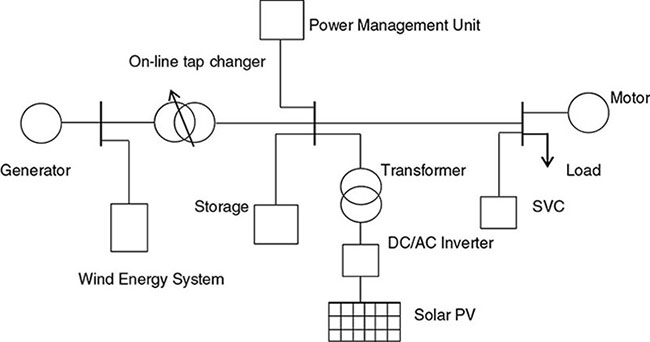CHAPTER 2ELECTRIC NETWORK ANALYSIS IN ENERGY PROCESSING AND SMART GRID
2.1 INTRODUCTION
In modern AC electric power systems (Figure 2.1), power is generated, transmitted, and distributed as balanced, three-phase AC. The three-phase system was independently invented by Galileo Ferraris, Mikhail Dolivo-Dobrovolsky, Jonas Wenström, and Nikola Tesla in the 1880s and is the most widely used means of transferring power through power grids. The three-phase system has the advantage of economy over the single-phase system because more power can be transmitted with significant cost savings in conductors per unit line length. The three-phase system may be configured as three-wire star, four-wire star, or three-wire delta system.

Figure 2.1 Simplified single-line diagram schematics of a modern electric power system.
Because of advances in electronics, the future electric power system is headed in the direction of microgrids and smart grids. In anticipation of demands, researchers and students need to be equipped with relevant knowledge on the emerging trends in this area. This chapter introduces the fundamentals of electric power systems and the basic computational tools needed for the design and analysis of the future-generation power system.
2.2 COMPLEX POWER CONCEPTS
In electrical power systems, we are mainly concerned with flow in the electrical circuit, such as Voltage (V), ...
Get Energy Processing and Smart Grid now with the O’Reilly learning platform.
O’Reilly members experience books, live events, courses curated by job role, and more from O’Reilly and nearly 200 top publishers.

